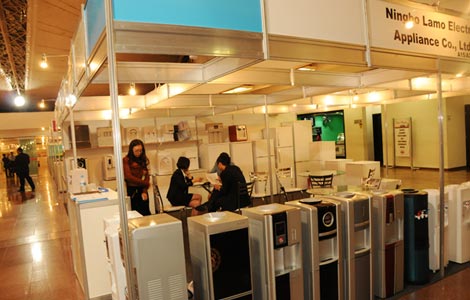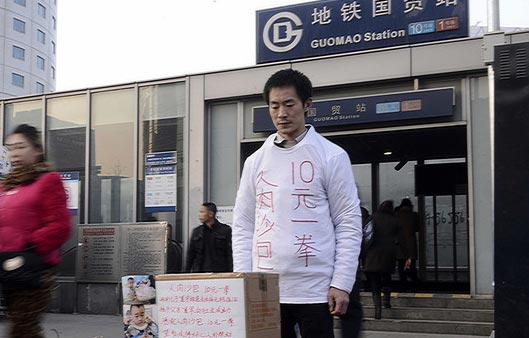Joint Satellite program helps save Brazil's forest
Updated: 2014-12-01 04:12
By Yang Yao in Beijing(China Daily Latin America)
|
||||||||
Deforestation rates in the Brazilian Amazon dropped 18 percent this year, reaching the second-lowest recorded level since monitoring started in 1988, the Brazilian Ministry of Environment announced in a press briefing on Nov 24.
According to the data, an estimated 4,848 square kilometers of forests were cleared in the 12-month period to June 2014, compared with 5,891 square kilometers in the previous 12-month period.
"In the last five years Brazil registered the five lowest deforestation rates ever recorded for the Amazon," Brazil's Minister of Environment Izabella Teixeira said.
The rate is an estimate based on analysis of satellite images from Landsat and the China-Brazil Earth Resources Satellite (CBERS), a series of remote sensing satellites built by Brazil and China, each covering an area up to 6.25 hectares.
The CBERS Program was born from a partnership signed between Brazil and China on July 6, 1988, and renewed in 2004, in the space technical scientific segment. The program involves the Chinese Academy of Space Technology (CAST), and the National Institute for Space Research (INPE), to develop a program to build and operate two advanced remote sensing satellites.
With the financial and technological resources from China and Brazil, an investment exceeding $300 million, a system of shared responsibilities was created (70 percent Chinese and 30 percent Brazilian) with the intent to implement a complete system of remote sensing internationally.
With the program, Brazil has obtained a powerful tool to monitor its huge territory by its own remote sensing satellites, looking forward to consolidate an important autonomy in this segment.
The CBERS's family of remote sensing satellites brought to Brazil significant scientific advances. This significance is attested by the more than 35,000 users from more than 2,500 organizations registered as active CBERS users, and also by the 800,000 CBERS images, distributed at the approximate rate of 250 every day.
Images generated by CBERS satellites are used in important areas, as deforestation control and environmental monitoring in the Amazon Region, water resources monitoring, urban growth, soil occupation, education and several other applications.
It is also fundamental for large national and strategic projects, for example Brazilian Amazon Forest Satellite Monitoring Project (PRODES), which evaluates and monitors the deforestation of the sugar-cane areas.
This time, the data provided through the PRODES project is carried out by Brazil's National Space Research Institute (INPE).
The data will be consolidated during the first half of 2015 and submitted by the Brazilian government for external auditing. The new 2014 data represents a reduction of 83 percent in deforestation rates compared to 2004 levels, and indicate a resumption of the trend of falling deforestation in Brazil.
Deforestation rates dropped in most Brazilian states in the Amazon region. Historically marked by high rates of cleared forests, the state of Para showed a 22 percent drop in deforestation, with 1,829 square kilometers of cleared forest recorded in the 12 months to June 2014, compared with 2,346 square kilometers recorded in the previous 12 months. The most significant reduction was registered in the state of Maranhao where the rate of deforestation fell by 39 percent. Increases were registered only in the states of Roraima (37 percent) and Acre (41 percent).
According to Minister Teixeira, the reduction is a result of several factors including the work of enforcement teams and a task force for the environmental regularization of rural properties, in accordance with the new Forestry Code.
The new numbers bring Brazil closer to meeting its voluntary climate change mitigation targets established under the National Policy on Climate Change, aimed at reducing projected greenhouse gas emissions by between 36.1 and 39.6 percent by 2020.
"All the work on Brazil's climate agenda is being carried out," said Minister Teixeira.
The 20th Conference of the Parties to the United Nations Framework Convention on Climate Change (COP20) starts next week, in Lima, Peru, where representatives from 190 countries will discuss new reduction targets for greenhouse gas emissions.
yangyao@chinadaily.com.cn
Most Viewed
Editor's Picks

|

|

|

|

|

|
Today's Top News
Oil price drop hits Latin America
Chile eyes Chinese investment
China's Xi seeks new outlook on foreign affairs
Rio 2016 games welcome Chinese companies
Chinese heavy machinery lifts Brazil
Brazilian meat exports to China to resume
Joint Satellite program helps save Brazil's forest
Beijing and Mexico reach together for stars
US Weekly

|

|















